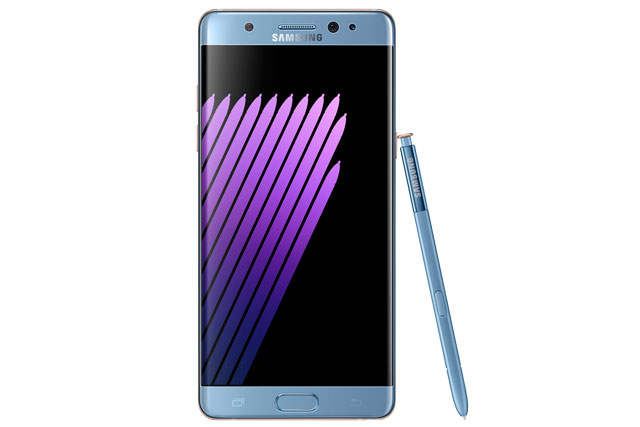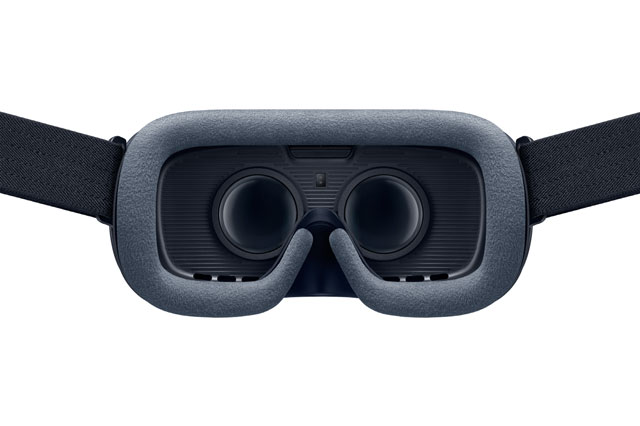
After extending its lead over Apple in the global smartphone market with the Galaxy S7, Samsung Electronics is now trying to keep that spirit alive before a new iPhone arrives.
The South Korean company announced the latest iteration of its large-screen smartphone with the 5,7-inch Note7 that can be unlocked with an iris-scanning camera.
Sporting a display that curves down both sides, Samsung’s successor to the Note 5 skipped a number to synchronise its name with the technology used for its top-selling Galaxy S7.
With consumers putting greater emphasis on multimedia when choosing devices, the Note7 also supports so-called high-dynamic range video content and the company partnered with Amazon.com to make such streaming content available in selected regions in time for the launch. HDR is seen as one of the next big advances in television and movie picture quality, alongside 4K Ultra HD and virtual reality.
“It is Samsung’s first smartphone to be equipped with the iris-scanning capability,” said Kang Byung-jin, Samsung’s director of global product planning. “Because the human iris is nearly impossible to replicate, iris-scanning is very secure and highly accurate.”
The device announcement comes at least a month before Apple is expected to unveil revamped iPhones. The Note7 will go on sale starting 19 Aug and roll out gradually across the globe, Samsung said. The device is expected to go on sale in South Africa in September.
The new device comes with Samsung Pay services and will be offered in four different colours, including gold, black, silver and blue. The Korean company also unveiled an upgraded version of its Gear VR, a gadget that twins with a Samsung phone to display virtual reality images.
Enhanced security
The iris-scanning technology, which relies on an infrared camera lens mounted on the front of the phone, can also be used to unlock a secure folder within the Android operating system.
Users can store sensitive documents and apps in the directory, which remain encrypted even if the phone is unlocked. Iris detection is fast, identifying a registered face and unlocking the device in less than a second during a demonstration in London.
Users will be able to authenticate Samsung Pay transactions via the new technology.

Other features of the phone include an improved stylus that can be used underwater or when the screen is wet. Waterproofing the pen makes it easier to use when it rains as liquid on the screen generally makes fingers less effective, while the new pen nub will work just the same. This will be particularly useful to people who work outside, like delivery drivers, Eric McCarty, vice-president of Samsung America mobile, told reporters in New York before the product announcement.
It also has a 12-megapixel rear-facing camera. Compared to its predecessor it has a higher-capacity battery, faster performance, a lighter-weight design and a USB type-C connector at the base instead of the older, more common micro USB port. The pressure sensitivity of the new pen has been improved to be exactly like a ballpoint, the company said.
Samsung introduced its large-screen Note series in 2011 and people were skeptical of its relatively large size at the time, David Lowes, the company’s chief marketing officer in Europe, said in an interview.
“Actually, the industry ridiculed us to some degree,” Lowes said. “But the way it’s evolved is really interesting, because the large-screen segment is the fastest growing segment now in Europe. It accounts for approaching something like 20% of the market. So this is not a niche proposition anymore.”
The world’s largest smartphone maker faces tougher competition in the latter half of the year. Apple is expected to introduce a new iPhone model in September, while smaller Chinese rivals such as Huawei release more sophisticated devices using the same Android operating system adopted by Samsung.
Since 2015, Samsung has been releasing its premium Galaxy smartphones earlier than usual to get the jump on iPhones, helping the Korean electronics giant win back market share. In the three months through May, Samsung had the biggest slice of the US smartphone market with 37% while Apple had 29%, according to Kantar Worldpanel’s 13 July report.
That helped Samsung post the biggest quarterly profit in two years, mainly driven by the S7 sales amid sluggish demand for iPhone 6 and its high-margin siblings. Last week, Samsung reported second-quarter net income of 5.83 trillion won (US$5,3bn), beating analysts estimates. — (c) 2016 Bloomberg LP




